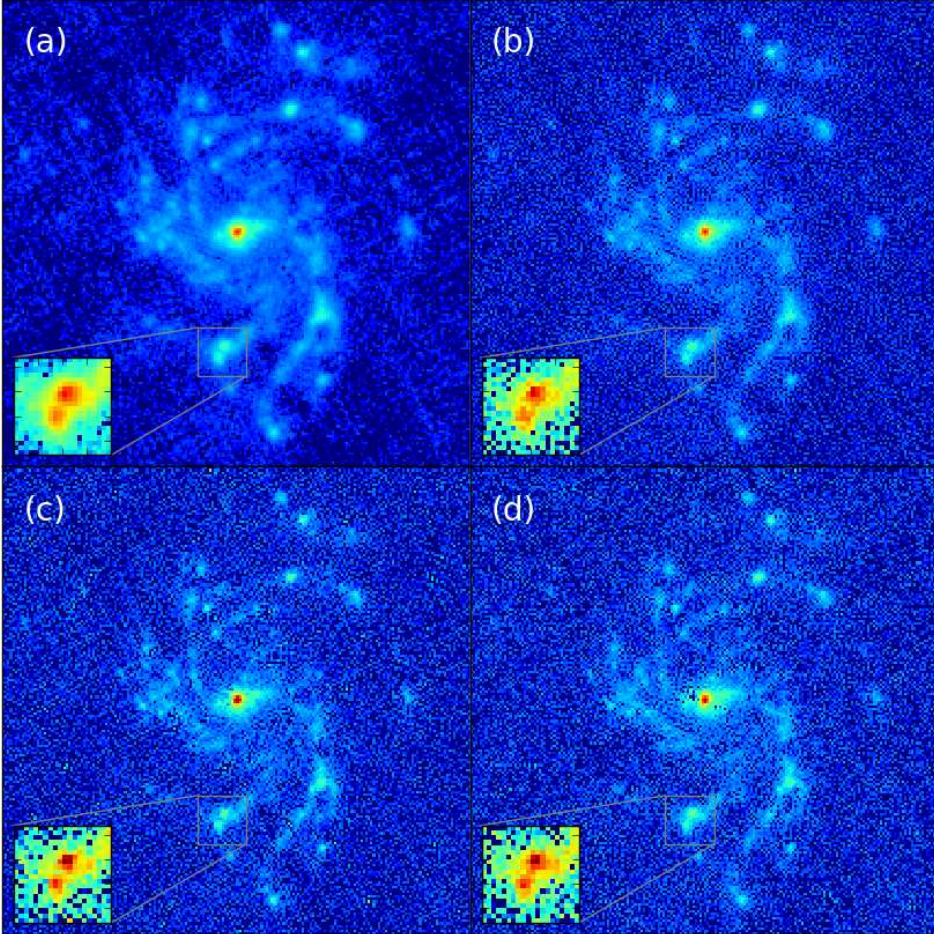Abstract
The Herschel Space Observatory of ESA was launched in May 2009 and is in operation since. From its distant orbit around L2 it needs to transmit a huge quantity of information through a very limited bandwidth. This is especially true for the PACS imaging camera which needs to compress its data far more than what can be achieved with lossless compression. This is currently solved by including lossy averaging and rounding steps on board. Recently, a new theory called compressed-sensing emerged from the statistics community. This theory makes use of the sparsity of natural (or astrophysical) images to optimize the acquisition scheme of the data needed to estimate those images. Thus, it can lead to high compression factors.
A previous article by Bobin et al. (2008) showed how the new theory could be applied to simulated Herschel/PACS data to solve the compression requirement of the instrument. In this article, we show that compressed-sensing theory can indeed be successfully applied to actual Herschel/PACS data and give significant improvements over the standard pipeline. In order to fully use the redundancy present in the data, we perform full sky map estimation and decompression at the same time, which cannot be done in most other compression methods. We also demonstrate that the various artifacts affecting the data (pink noise, glitches, whose behavior is a priori not well compatible with compressed-sensing) can be handled as well in this new framework. Finally, we make a comparison between the methods from the compressed-sensing scheme and data acquired with the standard compression scheme. We discuss improvements that can be made on ground for the creation of sky maps from the data.

